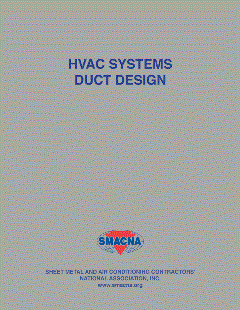The spacecraft, which is now on display at the California Science Center’s Samuel Oschin Pavilion, navigated 123 million miles of outer space elements during 25 missions. It even survived a tricky piggyback flight from northern California atop a modified 747 aircraft to Los Angeles International Airport.
But now that Endeavor has survived space and back, it needs to survive its stay at the museum. Structural engineer Atila Zekioglu and mechanical engineer Erin McConahey from Arup in Los Angeles were tasked with keeping Endeavor safe at its new home.
Earthquake protection
McConahey saw the potential of a catastrophic earthquake as one long-term risk to the Endeavour. The vaulted 17,000-square-foot metal building surpasses California seismic building codes, according to peer reviews. Likewise, Arup avoided mechanical and electrical elements above the shuttle except for the necessary six runs of overhead HVAC ductwork.
McConahey specified lightweight fabric air-dispersion duct manufactured by DuctSox Corp. The ducts and their independent cable suspension systems would more likely swing to dissipate energy under the violent shaking of a seismic event, compared to typical spiral metal duct and its anchoring system. Moreover, should the overhead ductwork become dislodged, the textile ductwork would be far more forgiving to the Endeavour’s fuselage than potentially damaging falling metal ductwork, according to McConahey.
While textile duct is typically specified for its aesthetics and air dispersion, McConahey’s seismic precautions may chalk up yet another benefit, at least in earthquake-prone California.
“I chose fabric duct because if it fell during a high-magnitude seismic event, there would be minimal damage to the Endeavour as opposed to metal duct,” said McConahey.
Other seismic precautions include Endeavour’s four seismic isolators provided by Earthquake Protection Systems Inc. in Vallejo, Calif.
“The seismic isolators significantly reduce the earthquake forces imparted to the orbiter and allow the shuttle to float while the ground below it moves,” said Zekioglu.
Temperature control
The engineers said that the fabric duct and the two custom air-handling units provided by Energy Labs will keep the Endeavour, as well as an expected million-plus visitors annually, in a comfortably controlled environment.
McConahey worked with Toro-Aire, a Dominguez Hills, Calif.-based manufacturer’s representative for air-management products, to ensure the duct’s specified 2 ½-inch-diameter orifices would provide air throws as long as 70 feet to ground level.
Each of the six 112-foot-long duct runs rise up the vaulted ceiling at a 27-degree angle in parallel to the pavilion’s steel support arches. At the apex, a 54-degree elbow re-routes each run down toward the opposite side to an end cap.
The one disadvantage of textile duct is its tendency to sag or wrinkle during idle air-handler periods, but this will not be a problem at the pavilion. The duct uses DuctSox’s SkeleCore fabric-tensioning system, a lightweight metal framework system.
The two Energy Labs 10,000-cfm, 43-ton air handlers deliver conditioned air to a 40-foot-high, 100-foot-long, 72-foot by 32-foot rectangular metal plenum that supplies each of the 22-inch-diameter textile runs. The two units’ shared riser offers a redundancy advantage as well as an energy-efficiency opportunity of running one unit during unoccupied periods. American Air Balance Inc. in Anaheim, Calif., tested the air-distribution system and calibrated plenum dampers supplying the textile ducts.
The air handlers have cooling and heating coils supplied by the campus’ chilled water and hot water central plants. The hot water coil is mainly for outdoor air heating and the dehumidification feature on the air-conditioning coil keeps the exhibit area within a comfortable relative humidity range.
The campus-wide Delta Controls building automation system monitors the exhibit. Active humidification is not provided in any of the other California Science Center facilities because Southern California relative humidity rarely falls below 30 percent. In the event of low humidity, the building automation system signals an alarm so that portable humidifiers can be temporarily added to the space. Setpoint Systems Corp. interfaced and programmed the pavilion’s HVAC operation with the campus-wide system.
The pavilion is a temporary home until the shuttle is moved into California Science Center’s new Samuel Oschin Air and Space Center, an expansion that’s scheduled for 2017.










